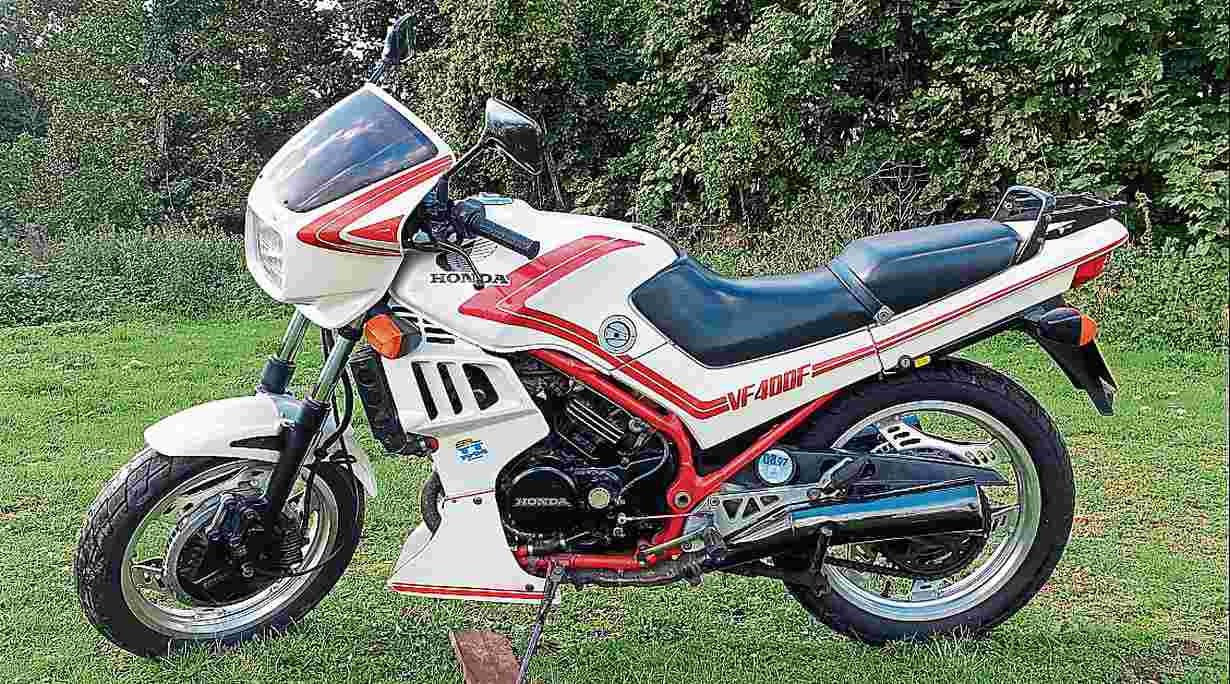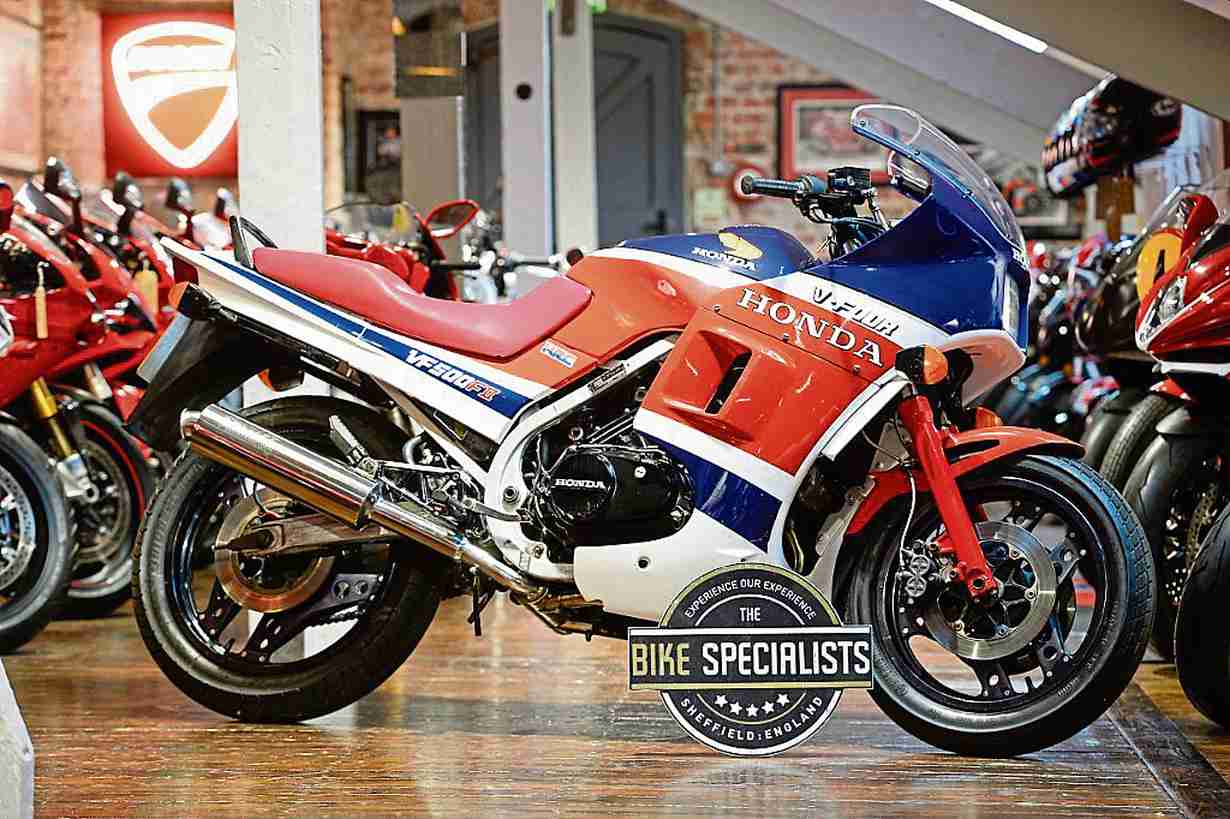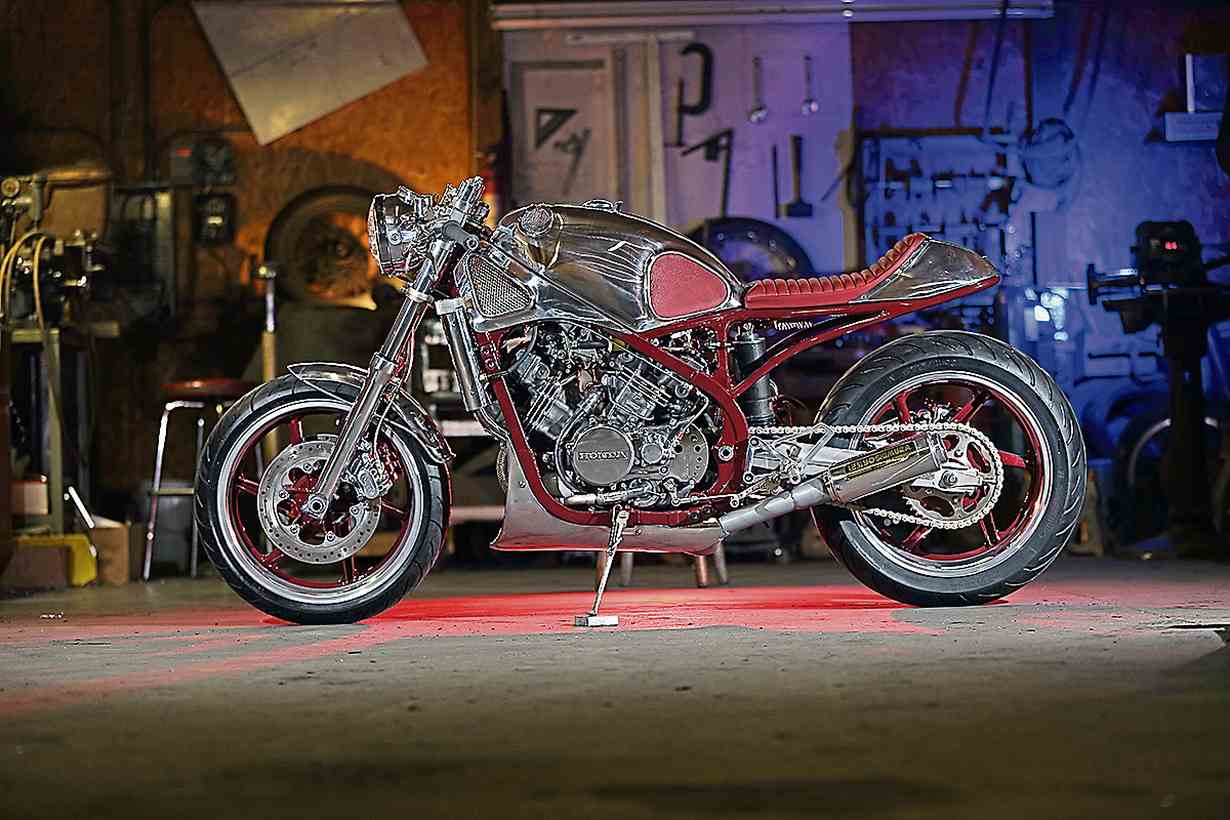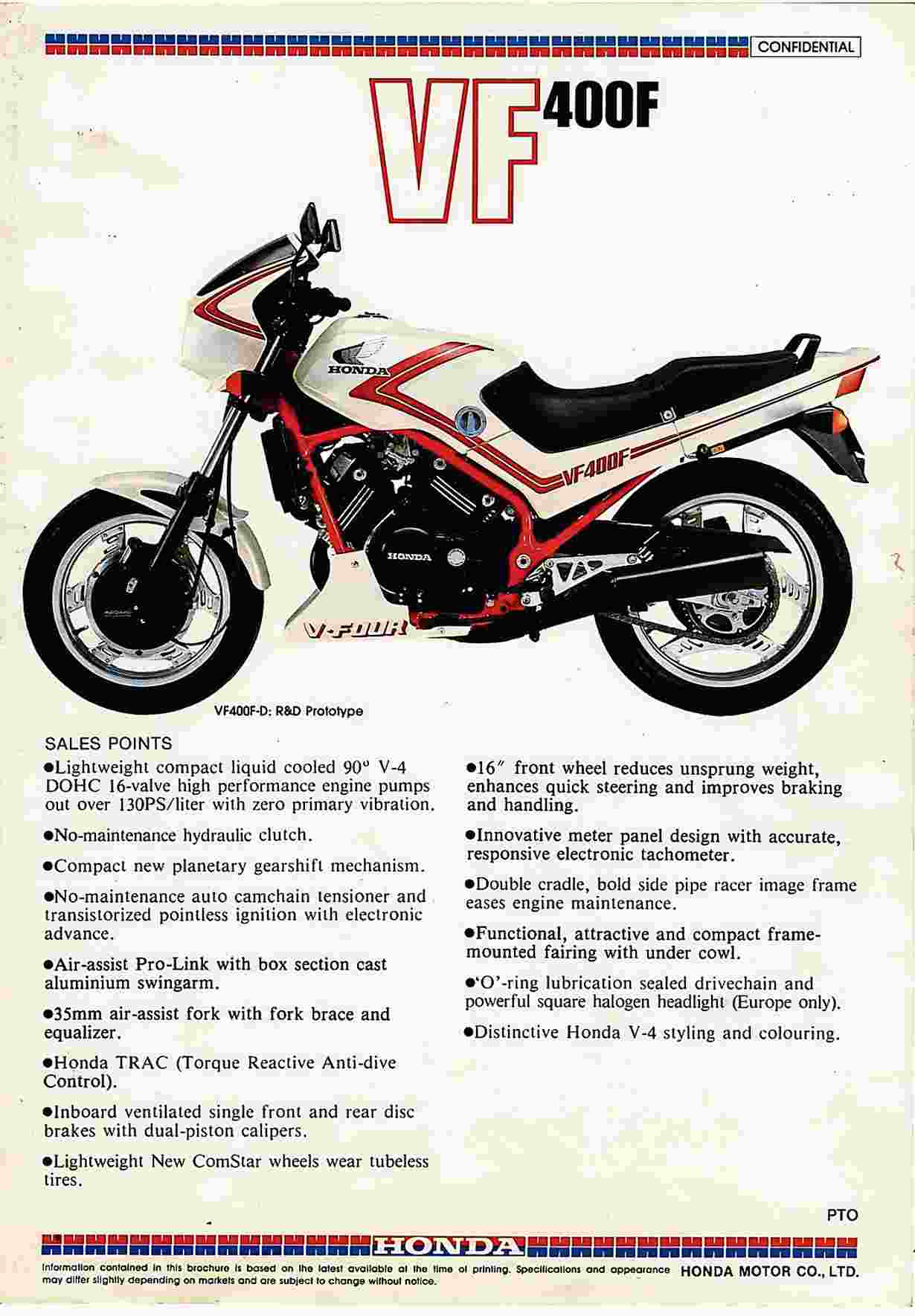Honda has, it cannot be denied, consistently been one of the most innovative and ingenious automotive companies that the world has ever seen but, argues Steve Cooper, with the VF400 and VF500, was it just too clever for its own good?

Honda’s plan for mass centralisation in general, and V4 motorcycles in particular, was effectively a given from the get-go. Just a few years after the launch of the VF750S, Honda pulled the wraps off a half-litre V4 and its 400cc sibling. Here were more examples of the Japanese infatuation with miniaturisation. Just as the racing 50cc twin and its five-cylinder 125cc spin-off had shown in the 1960s, a large number of smaller pots generally delivered enhanced performance via a greater ability to rev. Bar room logic might argue the more pistons you had the greater the engine’s higher internal friction would become but Honda had long discounted this. Even if multi-cylindered motors did have more surface-to-surface movement they were still able to deliver more power than an equivalent single or twin. The advantages outweighed the disadvantages by dint of the rpm available. Smaller diameter pistons on shorter connecting rods meant overall mean piston speeds were significantly reduced, thereby freeing up revs and power.

Although it might be assumed Honda had followed previous logic whereby the CB350 was essentially the same as the CB250 but with a bigger top end and carbs, the VF400 and VF500 were built on entirely different platforms. Arguably this apparent duplication led to unnecessary parts proliferation, but presumably Honda knew what it was doing. Rather like their progenitorial near-ancestors, the middleweight duo lasted fairly well with the smaller bike running from 1983 to 1987 and the larger from 1984 to 1986. On paper there wasn’t too much between them with the 400cc delivering nearly 54bhp at a stratospheric 12,500rpm and the 500 some 68bhp at just 1000rpm less. Despite a 20% difference in capacity, the pair were remarkably close in terms of overall mass; 193 kilos for the 400 and 201 kilos for the 500. Flat out, the smaller bike would see 113mph with the 500cc touching 128. Neither was a slouch and both were unquestionably good lookers.
Enjoy more classic motorcycle reading, Click here to subscribe to one of our leading magazines.

Initially both made good use of visually integrated seat/side panel/tank pieces, along with a top fairing on the 400 and a half fairing on the 500, with both running a belly pan. The second-generation 500s would go on to run midriff panels that effectively filled in the space between. Wheels were Honda’s own take on the subject matter and it reasoned openly that the eponymous Comstar arrangement offered the best of both worlds, giving the dynamic rigidity of cast alloy with the flexibility of wire spokes. But the very fact that no one else tried to work around the various patents therein and Honda chose not to revisit the composite wheel strongly suggests the design wasn’t quite as smart as it was claimed.

Where the VF500 ran conventional twin discs, the 400 was cursed with another of Honda’s bright ideas – enclosed disc brakes. Honda’s logic was that such a set-up meant there was no lag when the discs were used in wet weather. Joe Public countered that, if that was the case, and the concept had merit, why weren’t enclosed discs featured on the 500? Other than a deafening silence nothing came back from the factory. However, from a dealer’s perspective, there was a lot of vocalisation given that servicing a VF400’s brakes took considerably longer to service than those of the 500.

On the plus side very few ever questioned the ride of either machine and many commented favourably on their ability to despatch corners with summary ease. Even if many had initially questioned the use of 16-inch front wheels when the bikes were launched, it was almost an industry-wide norm at the time and riders soon got used to the slightly faster turn-in offered by the smaller wheel.
On paper at least, both bikes had a lot going for them and justified reasons to exist. The 500 was a natural and conventional capacity, falling neatly between 250s and full-fat 750s. Just like the original CB500 four, the VF500 offered most of a three-quarter litre’s performance with a substantial reduction in mass and size.
- Read more:
- Road Test: Honda VF400F/VF500F
The VF400 was not too much heavier than a 250, yet offered a significant hike in performance. It also fitted in perfectly with the Japanese home market’s restrictive licence categories in that 400cc was where the volume sales were. The future looked bright from a technical perspective, but not so from the public’s viewpoint.
Both machines were expensive to buy and service. The 400 wasn’t as impressive as many might have wished for and the 500 could be easily outpaced by either a tuned Yamaha LC 350 or a well-ridden 350 Power Valve. Despite being technical tour de forces, stylish, innovative and of proven reliability, the average punter simply didn’t want the cost or potential hassle come repair time. Nice idea, but possibly they were too clever for their own good? Instead of admitting outright defeat, Honda considered its options before resuming with V configurations but with just two cylinders, but that’s a story for another time.



